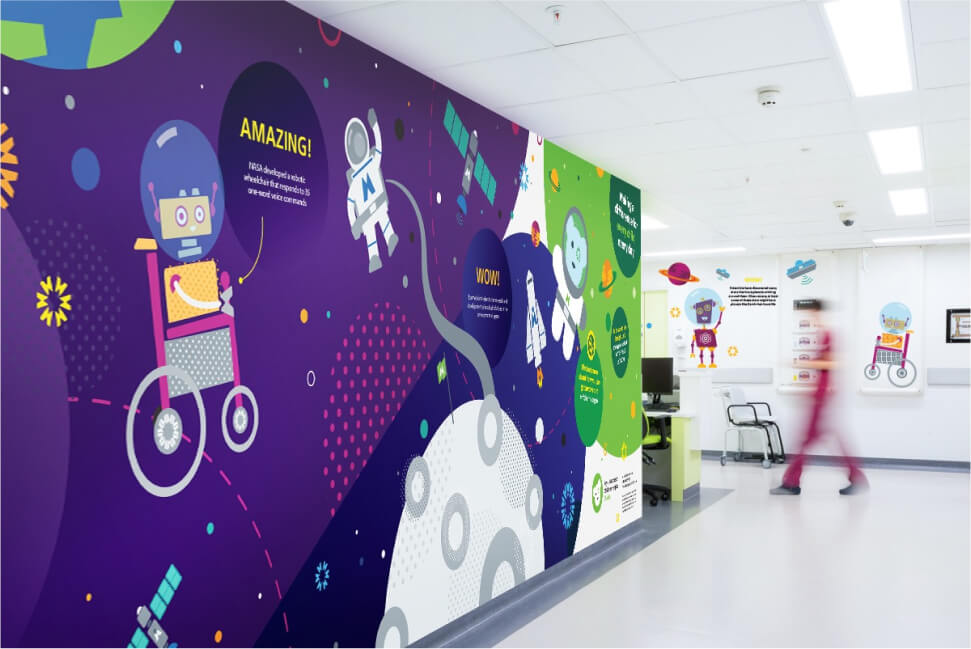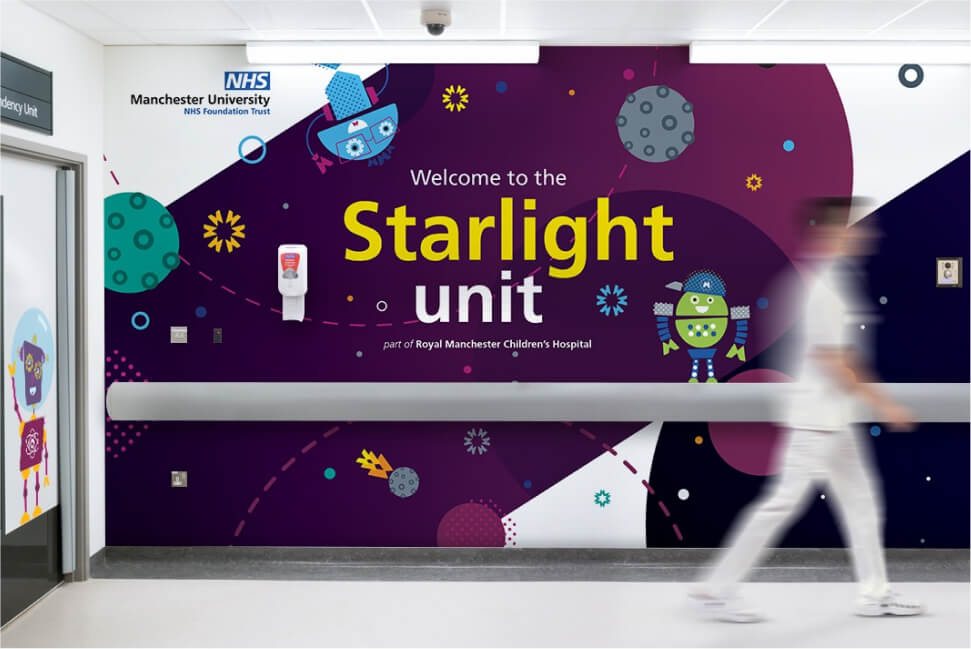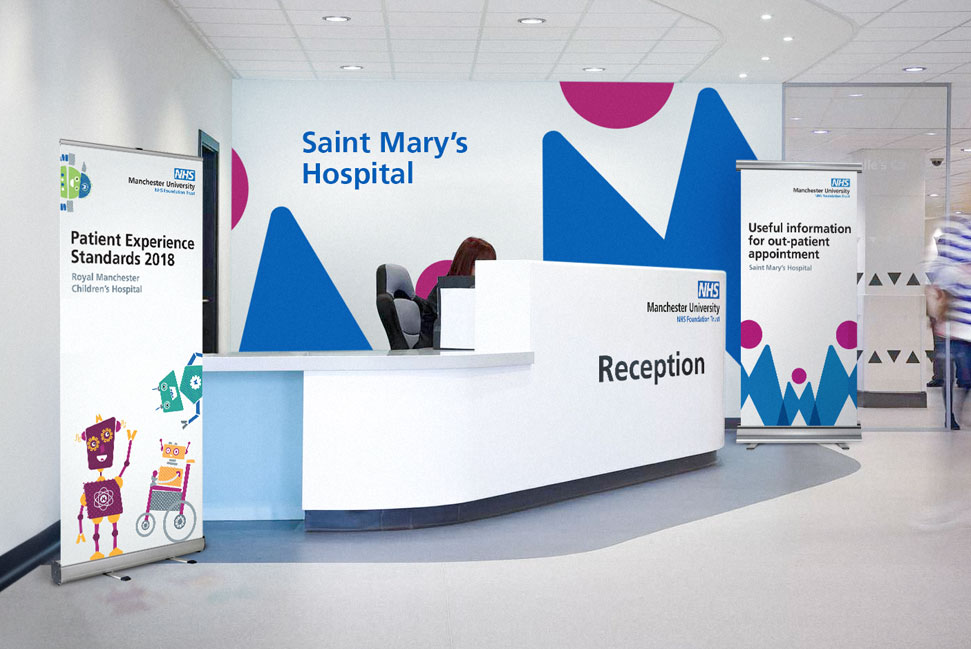- Branding
- SEO Content
- UX/UI
- Development
The challenge
Manchester University NHS Foundation Trust (MFT) recently formed following the consolidation of Central Manchester University Hospitals NHS Foundation Trust with University Hospital of South Manchester NHS Foundation Trust.
We were appointed to develop and implement a cohesive brand and communications strategy for the new combined Trust, which is now the largest in the UK. The newly-formed Trust also required a custom-built intranet solution to act as an effective staff engagement tool and replace previous legacy systems no longer fit for purpose.

MFT are the main provider of hospital care to approximately 750,000 people in Manchester and the single biggest provider of specialised services in the North West of England
The solution
The new visual identity of the Trust had to fit in with the core principles of the new NHS Brand Guidelines. Meanwhile, there also needed to be a unique, consistent and recognisable style for each of the 9 hospitals that fall within its remit. Our solution was to create a ‘parent’ visual identity for the Trust – in the form of a visual device, rather than a logo, to ensure brand compliance.
For the people of Manchester
The ‘M’ for Manchester was selected as a unifying visual device across the entities, designed in a way that it could be adapted to create variations for each of the individual hospitals. This approach ensures a clear parent/child relationship between the hospitals and ensures consistency across communications.
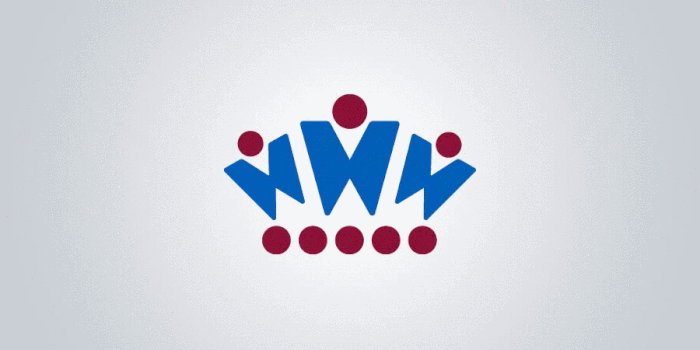
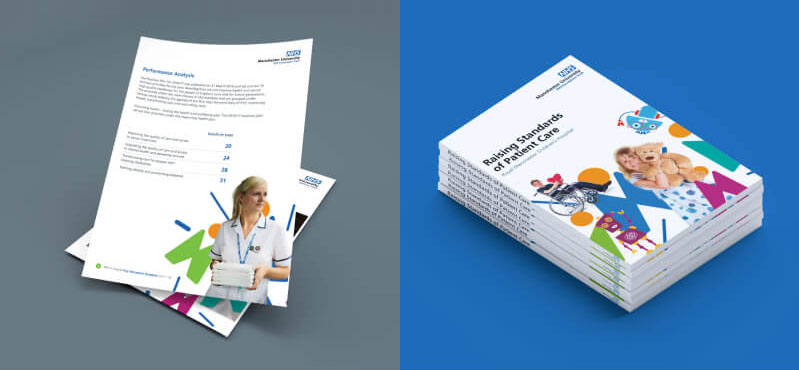
Website design & development
Prior to developing the new digital platforms for the Trust workshops were held with key stakeholders to gain a full understanding of requirements. Persona mapping identified the relevant characteristics and requirements of patients, consultants, visitors and journey mapping was carried to ensure important tasks such making appointments and finding information about parking facilities were easy to complete.
Approximately 90 user-stories derived from this process, which were then prioritised to determine the specification for the website build process.
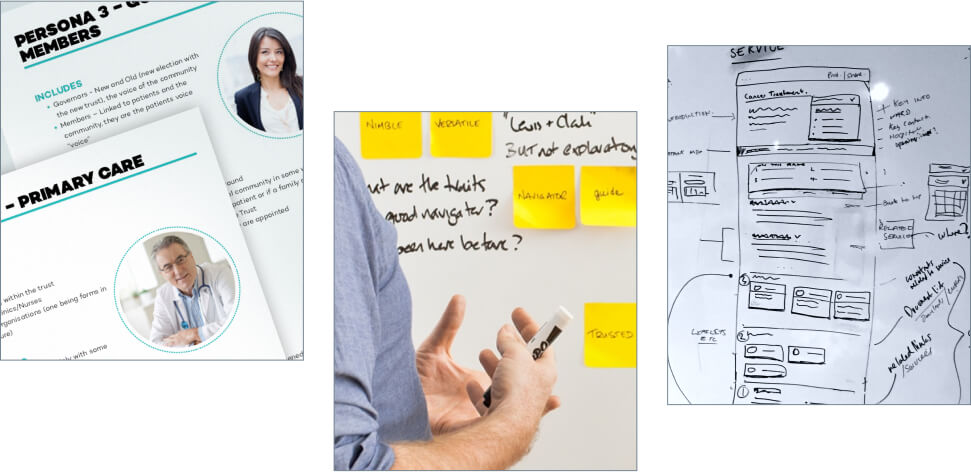
One website to rule them all
The first site built was the main Trust website which was completed within just 1 month, in tandem with development of the new brand strategy, to coincide with the official launch of the Trust. A migration programme then followed for the development of microsites for each of the 9 individual hospitals within the Trust.
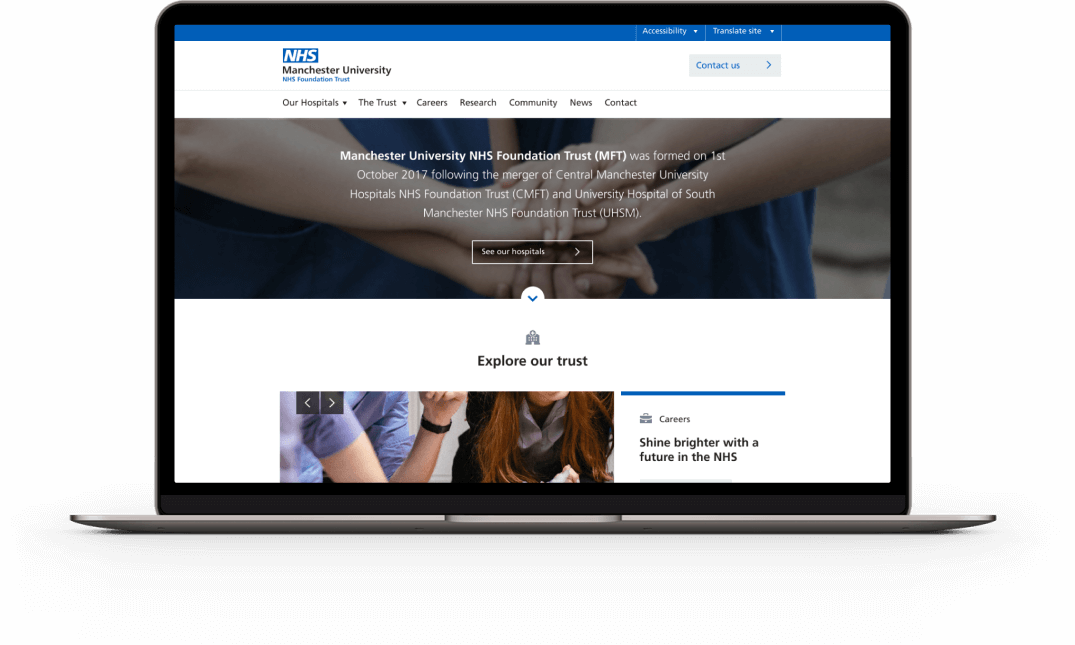
Multiple websites, one network
WordPress Multisite was the chosen platform for the sites which enables key content to be managed centrally, whilst individual management permissions can also be provided for each of the hospitals to update content independently.
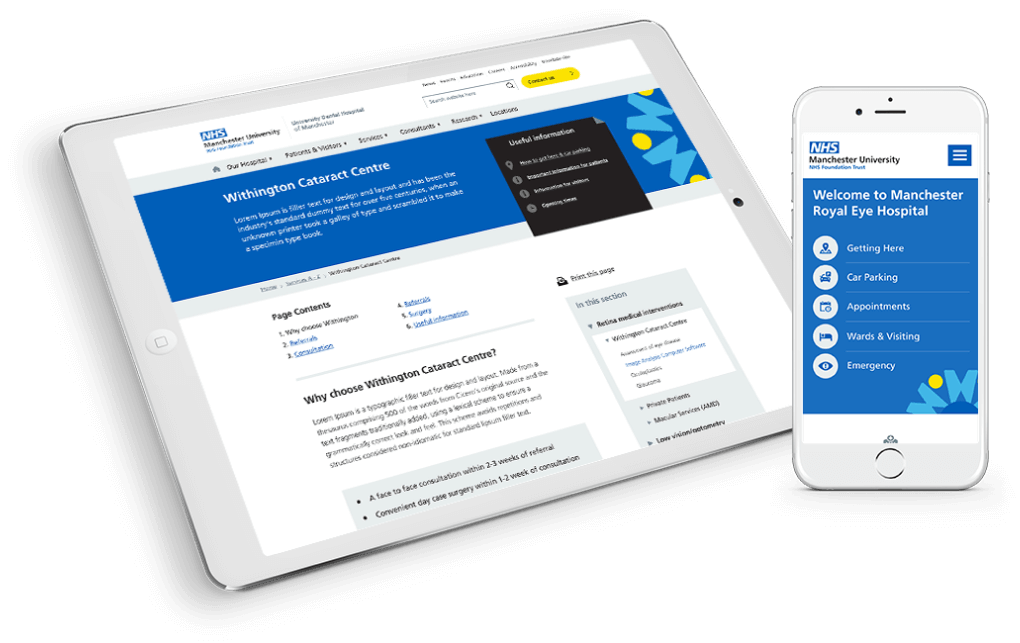
Designed to work for everyone
Given the diversity of users visiting the sites, it was also important to optimise accessibility. Google Translate was integrated into the sites to enable content to be read in different languages, and ‘BrowseAloud’ was incorporated to enable access for people with dyslexia, low literacy, English as a second language and mild visual impairments. Furthermore, to meet the accessibility guidelines recommended by NHS Digital, our team also designed the sites to maximise accessibility in terms of layout, contrast, readability and navigation.
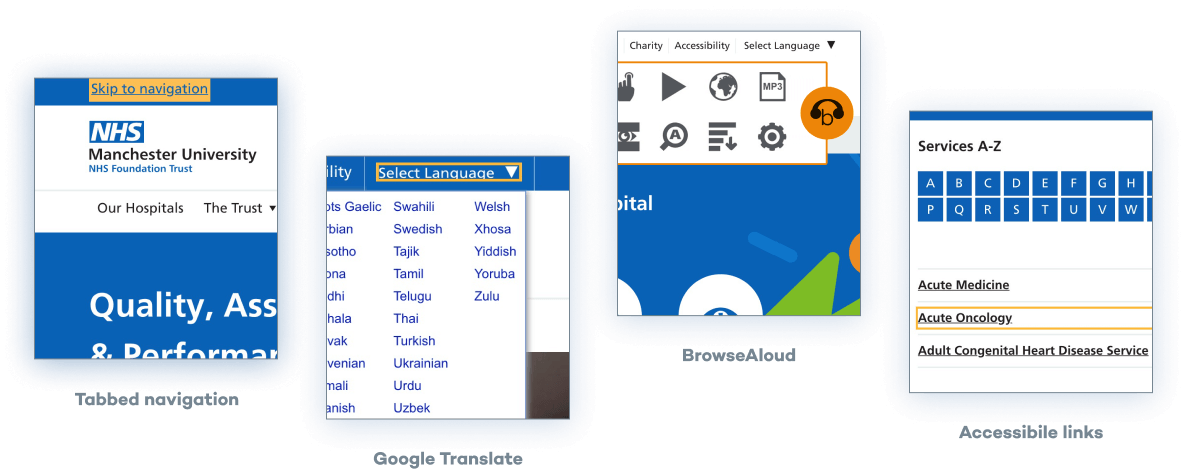
Intranet design & development
A separate workshop was held to determine requirements for the new Trust intranet. 30 stakeholders took part in an interactive session exploring different personas and user-stories. From this we have determined functionality associated with key requirements for the intranet, such as the need for effective communication and collaboration.
Search functionality has been identified as particularly important, in addition to the creation of a collaboration hub with an integral response and validation mechanism. A prototype was provided during the initial stages of the build process, enabling different teams within the Trust to utilise and explore the solution, to inform further development of functional requirements.
With the websites for the Trust and its associated hospitals being accessed by around 15,000 visitors per week, we’re proud to have been involved in the launch of such an influential and progressive Trust
The Outcome
Since the launch of the new brand and digital strategy for the Trust, stakeholder feedback has been fantastic, with positive comments being received from all over the Trust. One of the key objectives for the new Trust websites was to improve their usability. Visitors are now able to navigate to the information they require more quickly and easily. We know this because there’s been a:
Reduction in the bounce rate
Reduction in the amount of time spent on site
Increase in the number of pages visited

